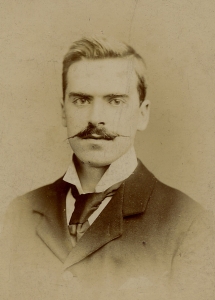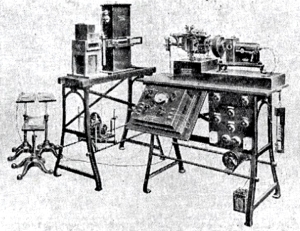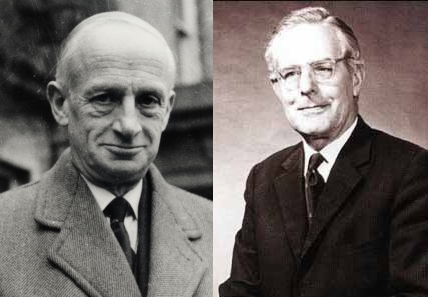The Beginnings of Cardiology in Dundee

William Malcolm (Tayside Medical History Museum)
The Dutch physiologist Willen Einthoven invented the first practical electrocardiogram in 1903, although his Nobel prize and the commercial production of ECG machines were to be some years away.
James Mackenzie had misgivings about electrocardiography - he admitted the value of the ECG machine but was afraid that doctors would get too fond of instruments and allow their clinical senses to atrophy. Nevertheless, Dundee was an early adopter of the technology, the first ECG machine being ordered by University College Dundee in 1913. A more advanced model was purchased for Dundee Royal Infirmary (DRI) in 1924. This valuable equipment was in the charge of Dr William Malcolm (1871-1936).
The purchase cost of 350 pounds was met by the Medical School, with the Infirmary responsible for the running costs. This somewhat cumbersome machine was placed under the charge of Dr William Malcolm (1871-1936).
A native of Blairgowrie in Perthshire, Malcolm was both a general practitioner and Assistant Physician to DRI, as well as serving as cardiologist and medical specialist to the Ministry of Pensions. In his obituary, in which he was styled 'Electrocardiographer', the directors of the hospital paid tribute to the care, precision and devotion to his pioneering cardiac work. It is evident that he was a man of talent and wide accomplishment and could be considered as the progenitor of cardiology in Dundee's Medical School.
Malcolm was succeeded as Electrocardiographer by Dr Alexander Macklin, who had settled in Dundee in 1925 as a general practitioner with anaesthetic duties at DRI. Macklin was a man of many parts.

Dundee's 1924 ECG machine (Dundee Central Library)
After his great adventure on the 1914-17 Imperial Trans-Antarctic Expedition with Ernest Shackleton (where all were miraculously saved from Elephant Island), he returned to the Antarctic with Shackleton in 1921 where he had the grim task in South Georgia of confirming at post-mortem examination his leader's fatal coronary heart disease.
Army service in World War I gained Macklin an MD based on work in the North Russian Winter Campaign, and he was also the recipient of the Polar Medal, OBE, Military Cross and the Russian Order of St Stanislaw. On his return to DRI after service in World War II, he was disappointed to find his ECG department "in chaos" and his records scattered. He resigned his post to set up the first Student Health Service in the UK in Aberdeen.

Adam Patrick (University of Dundee Archive Services)
Prior to World War II, medicine had been taught at DRI by Professor Adam Patrick, assisted by general practitioners with hospital attachments.
Patrick was largely dependent on private practice for income, had no personal office of his own, and the academic department of Medicine was little more than wards and outpatient rooms.
Students of the time were very familiar with Sydenham's chorea, rheumatic heart disease and syphilitic aortitis and knew the importance of hypertension, but coronary disease was uncommon.
Treatments for heart disease included bed rest, Southey's tubes for peripheral oedema, morphine for left ventricular failure, phenobarbitone for high blood pressure, tablets of digitalis leaf and mercurial diuretics. 'Myocardial degeneration' was a frequent entry on death certificates.
All this was to change dramatically with the appointments in 1951 of the already-distinguished Ian Hill and Donald Douglas respectively as the first full-time Professors of Medicine and Surgery in Dundee. These driving personalities collaborated closely in the care of cardiac patients, and went on to transform their departments into dynamic modern academic units, achieving national and international recognition.
Both men had been awarded military honours during World War II and were later knighted. They became the first-ever Presidents of their respective Edinburgh Colleges from outwith the capital, and held Royal appointments as Physician and Surgeon in Scotland.

Sir Ian Hill and Donald Douglas (Tayside Medical History Museum)
It was to be a golden period, dominated by basic and clinical research, with Dundee right at the cutting edge of advances in cardiology.
Back to exhibition homepage